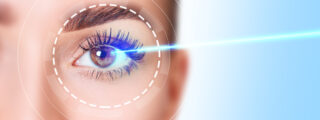
Fun in the Sun
School’s almost out, and children are already spending more time in the sun. Here is important information you can share with parents about sun exposure and their children.
Tip: UVB radiation varies over the course of the day, but is strongest between 10 a.m. and 2 p.m. Tell parents to encourage outdoor play before and after those hours.
EXPOSURE FACTS
Here are seven stats you can communicate to families with young children.
- 33.7%: Over a third of parents of kids under age 13 say their children rarely or never wear sunglasses.
- 3X: Kids receive three times the annual adult exposure to UV.
- 10%: One tenth of all skin cancers occur on the eyelids.
- 75%: In children under 10, 75% of UV radiation passes through their crystalline lens.
- 10%: By age 25, only 10 percent of UV passes through an individual’s crystalline lens.
- 4 hours: UVB radiation varies over the course of the day, but is strongest between 10 a.m. and 2 p.m.
- 4 seasons: While the UV index peaks during spring and summer, levels can be high in September and October. UV rays can also reflect into the eyes off winter snow.
EXPOSURE EFFECTS
As seen above, there are multiple factors that make children especially vulnerable to the effects of damaging UV. The result? Potential long-term damage to the eyelids, conjunctiva, cornea, lens, and retina. Here are a few examples of that damage.
- EYELIDS: Both UVA and UVB will sunburn the eyelids and make them more susceptible to the development of skin cancer.
- CONJUNCTIVA: UVB damage can lead to formation of pinguecula (that is, a triangular patch of mucous membrane involving the conjunctiva at the inner canthus of the eye) and pterygium conjunctiva, which is a similar entity on the cornea.
- CORNEA: The cornea can develop photokeratitis—corneal sunburn. Thanks to its highly regenerative capabilities, the cornea usually repairs this condition rapidly. Other degenerative changes—like climactic droplet keratopathy or speroidal degeneration—can result from chronic UV exposure.
- LENS AND RETINA: Long-term exposure to UV increases the risk of developing accelerated cataracts. Diabetics are also particularly susceptible to UV damage.
So how much UV is too much? Even a low level of UVA reaching the retina can result in damage over time.
Shamir Glacier PLUS™ UV is a great solution for eyes of all ages. It even includes extra UV protection that prevents harmful rays from being reflected into the eyes from the rear surface of the lens. That’s important information to share with parents. So is Shamir’s video about Glacier PLUS UV. Check it out at: https://youtu.be/Gu8PdJBjpL0
How do you address the dangers of UV to the parents and care givers of your younger patients? Join in our Facebook discussion and share in the conversation here.
Sources: The Vision Council, Prevent Blindness, Transitions Optical, Eyecare Business magazine, Shamir Insight, The American Academy of Ophthalmology, and The National Eye Institute.
Comments are closed.









